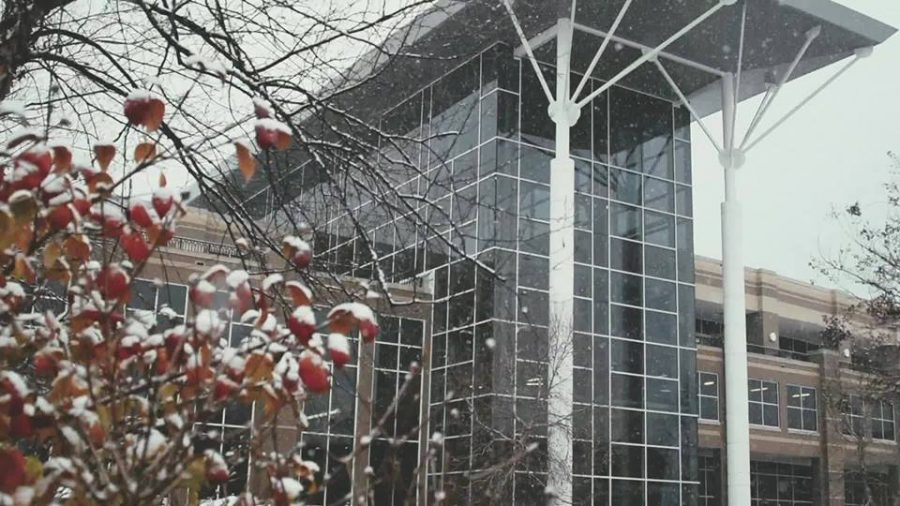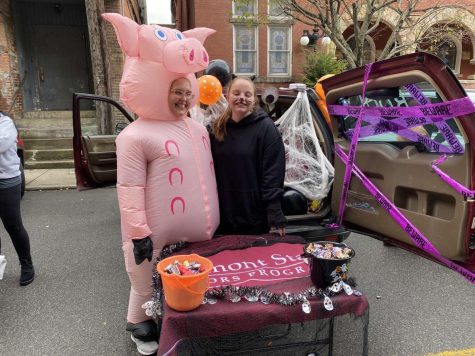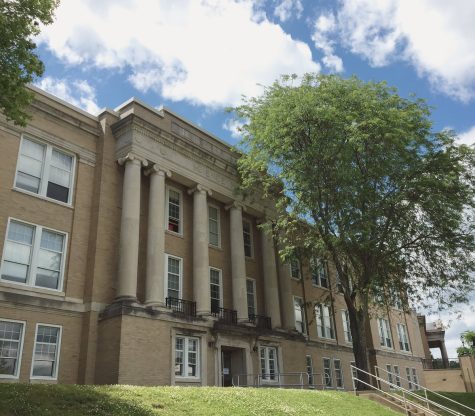Frigid temperatures freeze Fairmont campus
A shot of the Falcon Center during the Polar Vortex.
Many of us are familiar with the polar vortex that caused Fairmont State University to close January 30 through February 1. The polar vortex wasn’t just Jack Frost blowing us an unwanted kiss. The polar vortex was a serious threat to the well-being of students.
Is This Really A Threat To Students?
The effects of the polar vortex have cost the lives of many this year. One of which was a pre-med student at the University of Iowa, Gerald Belz. According to Julie Bosman and Mitch Smith of The New York Times, Belz was unable to survive a short walk from his dorm in subzero temperatures. Nina Golgowski of the HuffPost reported a similar story in which neuroscience major, Connor Gage was found unconscious in a parking lot that he used for a shortcut to class at the University of Vermont. Although medical officials tried to resuscitate him, they were not successful. We often exaggerate when we say, “the cold took my breath away” but for these students, the saying was nothing short of literal.
How Can I Ensure My Safety?
Unfortunately, our species doesn’t hibernate, causing many of us to feel social pressure thereby motivating us to remain just as productive in the winter months as we were in the warmer months. When the temperatures are in the teens or single digits, it’s advisable to cancel plans and stay in a heated building. If you can’t stay in a heated building, try to cover all exposed skin with warm layers such as gloves, hats, earmuffs, ski masks, thick winter coats, fleece pants, thick socks, snow boots, etc.
For short walks outside, text a friend your estimated arrival time. This way, if you do not arrive within a reasonable amount of time someone will be available to report your absence. Taking these precautions may be a hassle, but they could save your life.
Polar Vortex 1101
For those that are not familiar with the polar vortex, it is best described by writer Jeff Berardelli of CBS News when he states, “It’s a whirling mass of cold air circulating in the mid-to-upper levels of the atmosphere, present every winter.” and “It usually stays closer to the poles but sometimes breaks apart, sending chunks of Arctic air southward into the U.S. during winter.” The chunks he refers to are those that cause the sudden drop in temperatures













Richard Grigg // Feb 13, 2019 at 10:37 am
Great article. The examples really made the point come alive.